Well, I didn't spend three whole days in the quarry to get the abundance of visual material for today's post but I did visit it for a few hours a day, three days in a row, in the first half of October 2023.
All the photographs I'm presenting here were taken on three occasions in the period from the 7th of October to the 9th of October last year ...
... in the abandoned limestone quarry situated in the coastal area called Marlera ...
... a couple of kilometers from the village of Liznjan and five or six kilometers from Medulin, the small, tourism-oriented town where I live.

I had a lot of fun searching for insects and other small arthropods in those days ...
... so expect plenty of macro in this post—stuff like this portrait of a Locusta migratoria grasshopper.
The grasshopper was well-camouflaged on the dry, brown vegetation.
Locusta migratoria is a big, robust grasshopper I only encounter in the seaside areas near Liznjan.
Here you can see a pair of beetles mating. They are black with a bit of blue-violet iridescence, especially on their legs.
The dark blueish shine can be seen only in natural light. I used the small, built-in flash in this photograph.
The light was pretty low in the shade so I had to use the flash to get a sharp shot while the beetles were moving.

Only when they finally stopped for a minute, did I get an opportunity to show the scene in the subdued ambient light.
The name of the species is Timarcha goettingensis. It belongs to the Chrysomelidae family.
In this wide shot, you can take another look at the scenery.

This is the Nomisia exornata ...
... a spider from the Gnaphosidae family.
Gnaphosidae are commonly known as ground spiders.

Here you can see a woodlouse running across the gravel. The name of the species is Armadillidium pallasii. The family is Armadillidiidae.
A few minutes later ...

... when I overturned a bigger piece of stone that was lying nearby ...
... this group of Armadillidium pallasii was uncovered.

Once I exposed them to the light of the day, they started searching for a bit of dark and quiet in the crevices.
At moments, the woodlice were moving at different speeds so one of them ended up motion blurred in the last picture on the right in this tryptich while others are frozen in action and sharp. The same happened in the previous photograph, I mean, the one you saw before the tryptich.

Observing the Armadillidium pallasii woodlice sure was fun to me but for them those few minutes were probably a bit stressful ...

... so I returned the stone to the position in which I found it. The woodlice were in a dark and quiet place again.
In some places, more or less in the center of the abandoned quarry, the Dittrichia viscosa plants were in bloom. About ten meters from the yellow flowers shown in this shot ...
... a barren patch of terrain was covered with interesting crust.
The crust looked like a bunch of lichens from a distance but upon closer inspection, I started to think that these formations were only limestone dust modeled by the humidity.
Maybe some bacteria also had a certain role in creating this thing. I don't know. It's a visually interesting, photogenic phenomenon, that's for sure.

In some places ...
... the crust was covered with moss.

That moss was a joy to observe and photograph through the macro lens.

In some spaces, the moss was sparsely scattered across the white surface that looked like a miniature version of the desert landscape.
In other, the growth was very dense, resembling an inviting, soft carpet.

I don't know what type of moss exactly this is, can't tell you the name of the species.
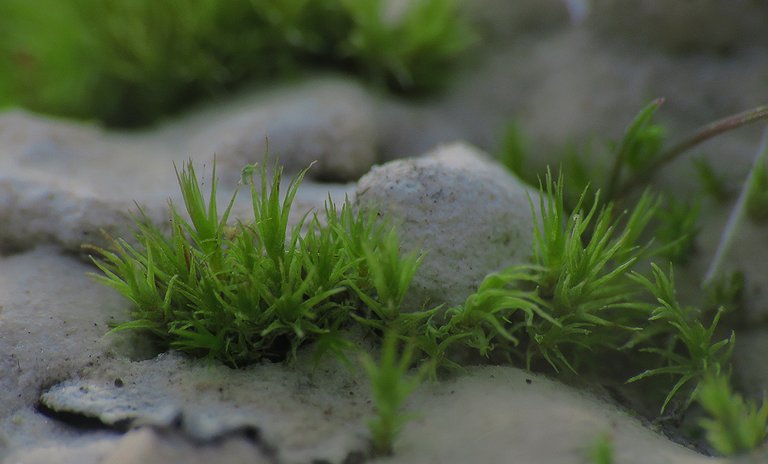
Near the moss and the crust ...

... only a few meters further ...
... I came across this tiny jumping spider.

The spider looked completely black at first sight, but ...

... but from a certain angle and in a certain light, its abdomen was iridescent.
The name of the species is Chalcoscirtus infimus. The family is Salticidae, of course.
In this photograph, the spider is staring at you, while in the following one ...
... the focus is on the soft green moss again.
Here you can take one last look through the macro lens before waving goodbye to that moss.
At some point, while rambling around the deserted quarry ...
... I came across a lizard ...
... that was enjoying the warm October afternoon ...
... on the dark surface of an old tractor tire that someone recently threw away to rot at the bottom of the quarry.
I saw three lizards later that day.
Two of them were sunbathing on the top of the tire.
One was hidden in the crevices of that rubber island. These are all Podarcis siculus, fast and agile lizards from the Lacertidae family.
This moth from the Pterophoridae family was also posing on the tire.

The name of the species is Hellinsia pectodactylus.
This grasshopper is very visible on the black surface of the tractor tire, but ...
... but down on the terrain covered with stones, dust, or gravel, the insect has a great camouflage.
The name of the species is Sphingonotus caerulans.
Here you can take another look at the scenery. The friend who was there with me is posing right in the middle of the shot.

This is an insect I rarely encounter. I saw it only a few times in nature.
It's a planthopper from the Caliscelidae family. The name of the species is Caliscelis bonellii. This is a female. Males look considerably different.
Rare encounters are always a special joy to photograph.
This well-camouflaged caterpillar was resting on the lower, dry part of the Dittrichia viscosa plant. The caterpillar is the larval stage of the Thalpophila matura, a moth from the Noctuidae family.
In the foreground of this shot, you can see the needles and branches of a small, shrub-like pine tree that grows in the middle of the quarry.
The pines on the harsh terrain at the bottom of the quarry are all small.
I don't know how exactly old they are but I'm pretty sure they looked pretty much the same a few decades ago.

Small pines can be seen on the walls of the quarry as well.
They don't look particularly interesting at first sight but after a bit of zooming in and observing through the lens of my camera, I started noticing a distinct personality in each little tree.

With a few decorative balls, this one could be a nice Christmas tree on the rock.
Here you can see another tree from the bottom of the quarry.

The pines on the edge of the quarry are taller.
This small, juvenile spider belongs to the Lycosidae family.
The name of the species is Pardosa lugubris. What looks like stones in this and the previous photographs are grains of gravel. Adults are much bigger.
This wide shot is here to let you take yet another break from the macro view. It shows the scenery and a friend of mine resting on a deckchair that someone threw away to be a piece of garbage in the wrong place.
Here you can see the tiny, juvenile Hogna radiata. The adult Hogna radiata is a big, robust spider from the Lycosidae family, one of the biggest spiders that can be seen in my area.
This is the biggest grasshopper in my area.

The name of the species is Anacridium aegyptium.
The grasshopper was slowly walking across the gravel to one of the small pines shown earlier in the post when this and two previous photographs were taken.
I found the spider shown in this shot when I overturned one of the many small pieces of limestone scattered all across the quarry. It looks like a species from the Oecobiidae family. That's all I can tell you here.
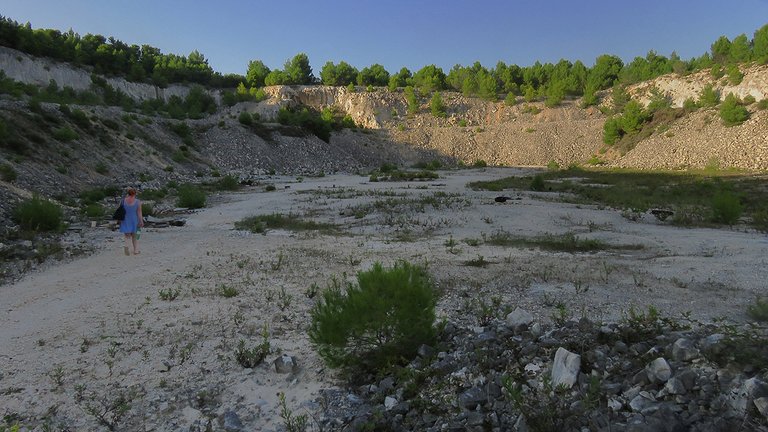
Here you can take another look at the wider setting, the abandoned quarry with its limestone and a small community of resilient plants.
The Locusta migratoria grasshopper was the first insect I introduced in today's post. That grasshopper was completely brown.
Here you can see a different morph of the same species for a change.
This is also Locusta migratoria, but ...
... but the grasshopper shown here is mostly green, only its wings are completely brown. A bit later that day ...
... I found another brown Locusta migratoria in the quarry.

This one ...
... was resting on a relatively big piece of stone.
It was near dusk and the light was fairly low so I used the flash on most of the shots.
Here you can see the same grasshopper photographed in ambient light.
Locusta migratoria is pretty big for an insect, but like all insects, it looks rather small from a couple of meters distance.
Here, especially if you enlarge the picture by clicking on it, you can see the young Podarcis siculus lizard and an adult Locusta migratoria standing near each other in the same shot. Both animals have a nice camouflage on the stony terrain with small green plants scattered across it and they are both more or less the same size.
I came closer to the grasshopper in this photograph.

It was an interesting scene to collect through the lens of my camera and put in today's post.
In this set of six photographs, you can see the friend who was there with me posing in the limestone scenery.
Here you can see a weevil walking across the stretch of stony terrain with no plants. The name of the species is Otiorhynchus ligustici. The family is Curculionidae.
This is yet another grasshopper. The insect was partially hidden by the gravel when I took this photograph.
Compared to Anacridium aegyptium and Locusta migratoria ...
... Acrotylus patruelis is a much smaller grasshopper.
I encounter this species only on the stony terrain in and around the quarry.
In the area near the pine shown in the foreground of this shot ...
... I photographed another Nomisia exornata spider, and then ...
... I came across this tiny grasshopper from the Tetrigidae family.
It's a nymph whose wings aren't fully developed. In the following photograph ...
... you can see a slightly bigger adult.

The name of the species is Tetrix ceperoi.
These two shots show the same scene photographed in two slightly different ways. In the right shot, I came closer to the pine twigs in the foreground and used the flash to illuminate them. It's a small difference that makes the photograph more vivid and dynamic.
Yep, that's all folks!
The following links will take you to the sites with more information about some of the protagonists of today's post. I found some stuff about them there.
https://en.wikipedia.org/wiki/Migratory_locust
https://en.wikipedia.org/wiki/Timarcha_goettingensis
https://www.arachnophoto.com/en/gnaphosidae-2/nomisia-exornata/
https://www.inaturalist.org/taxa/792754-Armadillidium-pallasii
https://en.wikipedia.org/wiki/Dittrichia_viscosa
https://en.wikipedia.org/wiki/Italian_wall_lizard
https://en.wikipedia.org/wiki/Hellinsia_pectodactylus
https://en.wikipedia.org/wiki/Sphingonotus_caerulans
https://www.gbif.org/occurrence/gallery?taxon_key=2057937
http://www.pyrgus.de/Thalpophila_matura_en.html
https://en.wikipedia.org/wiki/Pardosa_lugubris
https://en.wikipedia.org/wiki/Hogna_radiata
https://en.wikipedia.org/wiki/Anacridium_aegyptium
https://uk.inaturalist.org/taxa/47587-Oecobiidae
https://en.wikipedia.org/wiki/Otiorhynchus_ligustici
http://www.pyrgus.de/Acrotylus_patruelis_en.html
https://en.wikipedia.org/wiki/Tetrix_ceperoi
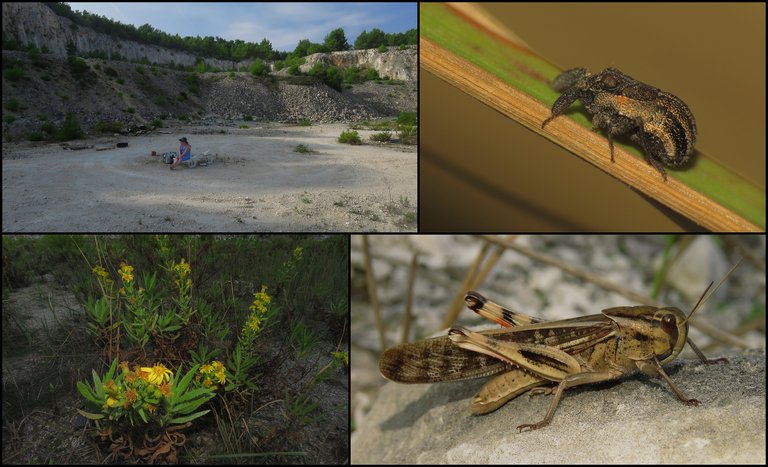






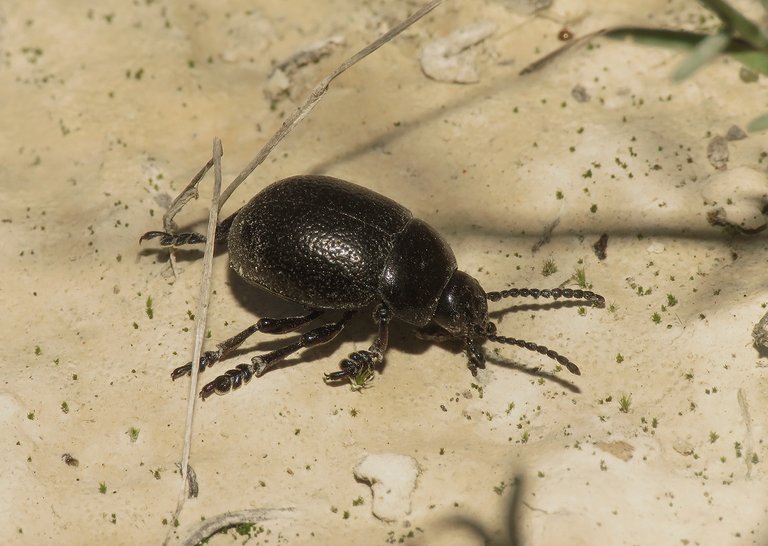
























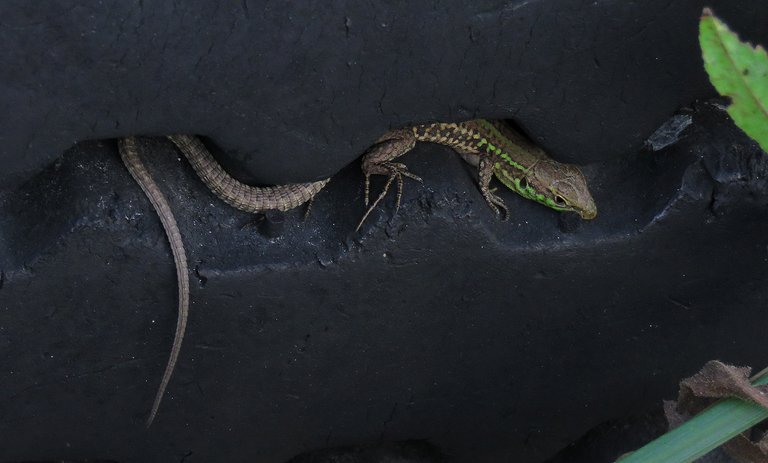

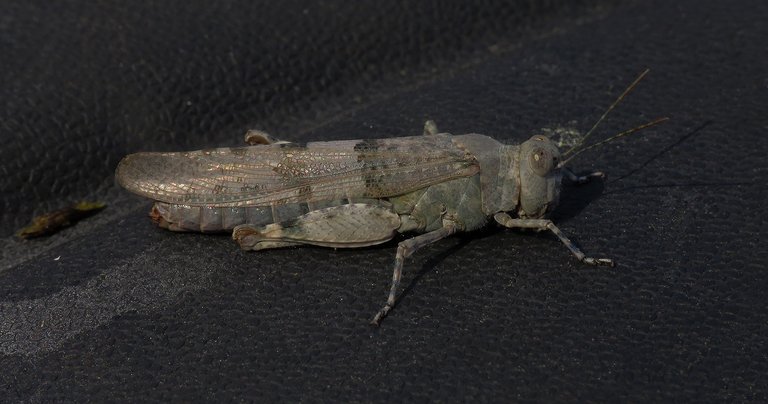












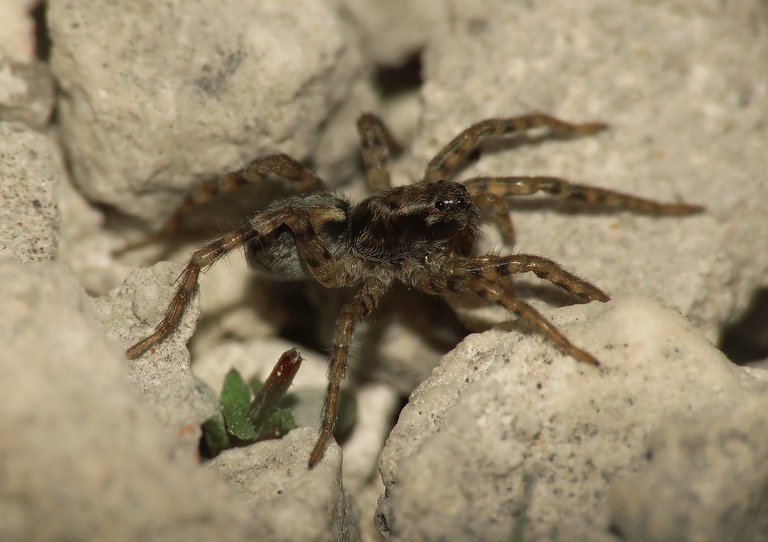












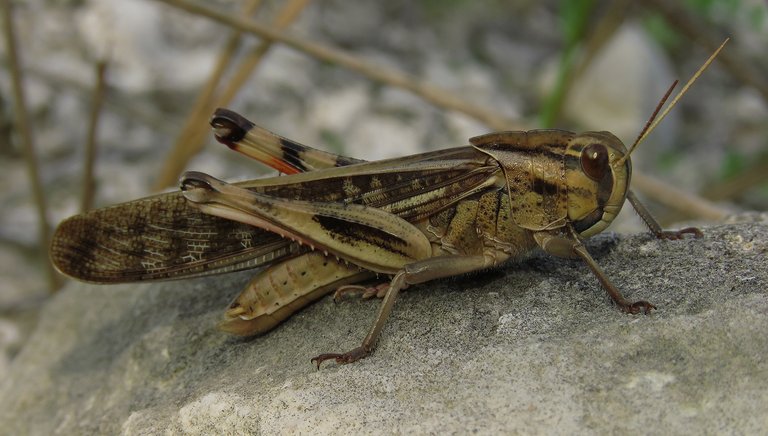

















@tipu curate :)
Upvoted 👌 (Mana: 65/75) Liquid rewards.
This post was shared and voted inside the discord by the curators team of discovery-it
Join our Community and follow our Curation Trail
Discovery-it is also a Witness, vote for us here
Delegate to us for passive income. Check our 80% fee-back Program
Hello @borjan friend!!!... As usual coming from you ¡Amazing macro phiotography stuff!!!... Wow... ¡I like a lot these "Armadillidium pallasii"!... Looks like tiny trilobites!!! :))
!discovery 35
!VSC
!PIZZA
!BBH
@jlinaresp has sent VSC to @borjan
This post was rewarded with 0.1 VSC to support your work.
Join our photography communityVisual Shots
Check here to view or trade VSC Tokens
Be part of our Curation Trail
@jlinaresp ha enviado VSC a @borjan
Éste post fue recompensado con 0.1 VSC para apoyar tu trabajo.
Únete a nuestra comunidad de fotografía Visual Shots
Consulte aquí para ver o intercambiar VSC Tokens
Se parte de nuestro Trail de Curación
I admire your passion for photographs and searching for insects, having gone three days to that place at a distance of five kilometers from home shows how passionate you are.
What a beautiful place to visit, it is also home to many species of insects, ideal for taking macro photographs.
Beautiful shots, I appreciate that you let us know about this experience
have a great dayHello dear friend @borjan good morning
Thanks. 🙂 I whish you a great day.
De todas las fotos me quedó con el saltamontes Marón.
I did enjoy the tour, I liked the photos, more about nature than the insects hahaha, it was NOT bad, it's ME, I'm not bad hahahaha, I just prefer nature, but the lizards on the tire sunbathing seem very beautiful, and I see one at the end of the post.
A hug @borjan, when I read what I wrote, IT'S ME, I remember a girlfriend I had, FELIPE tells me, it's me, it's NOT you, hahaha, this means that they are bored by your side, or that she has another one on the way, and it wasn't ME hahaha .
I don’t think I can ever stay in Marlera at night. There are so many animals or insects there and I am always scared of them. I love how you are even brave enough to have taken their pictures
The pictures are really lovely
Nice one!
Congratulations @borjan! You have completed the following achievement on the Hive blockchain And have been rewarded with New badge(s)
You can view your badges on your board and compare yourself to others in the Ranking
If you no longer want to receive notifications, reply to this comment with the word
STOPNice photography as always.
Want to Know more about Hivepakistan?
Ping Us On Hive Pakistan Discord server
To support HivePakistan, delegate Hive Power to hivepakistan and earn 90% curation reward :)
Here are some handy links for delegation
A delegation of 500 or more HP makes you earn Hivepakistan supporter badge.
Amazing captures!
So much life at the bottom of this quarry. I've always wanted to explore one but there are no abandoned ones near me. Just one, massive, active one. This kind of scratches my itch.
I really enjoyed the photos of my buddies the Armadillidium. I recently started keeping some members of the species A. vulgare, that's why.
Nice photography @borjan
Many species of insects and their scientific names, great photography
wow! I liked this. The amazing nature was really showing off and you have a nice shots. Looking forward for more of this.
I so much love the quality of these photography works. They are looking so great
$PIZZA slices delivered:
(7/10) @jlinaresp tipped @borjan
The rewards earned on this comment will go directly to the people( @jlinaresp ) sharing the post on Reddit as long as they are registered with @poshtoken. Sign up at https://hiveposh.com.https://reddit.com/r/blogs/comments/1be5vuo/three_days_in_the_stone_quarry/
Like all these clicks. Especially the snow,the moss that gives appearance like a grass and beetles, bugs, insects, grass hopper looks so close to eyesight.
Ver nice. Some really nie shot you managed to capture there.
It's good that you come to such a beautiful place and bring us such special pictures, it adds a lot to our knowledge, especially about such beautiful insects.
Given the quarries, wildlife is abundant!
I like the beautiful lizards!
Hehehehe I miss the Marlera intro!!
Great shots Borjan!
#hive #posh
Three days at a row? You really have so much energy to capture all these organisms and the quarry turned out to be a whole ecosystem of plants and insects, and even the lizards.
Topnotch photography as always.
Lots of insects in the quarry.
Is that quarry still functioning?
3 days pictures 😍 all are superb...it is really nice to observe all objects and capture them beautifully 😀
in your photogphy blog I really feel very happy to see wild animals such as butterflies, grasshoppers and others. This is one of the habitats that is very worth preserving so that this universe will always have its own unique art when we some people and even some countries destroy animals like that. I don't know how much loss it would be on this earth if these animals were exterminated. I hope that these animals are alive and well maintained as much as possible so that nature still makes these animal sounds at certain times. Thank you for sharing with us👍
Wow interesting to know about that all some species are new to my knowledge. Amazing clicks